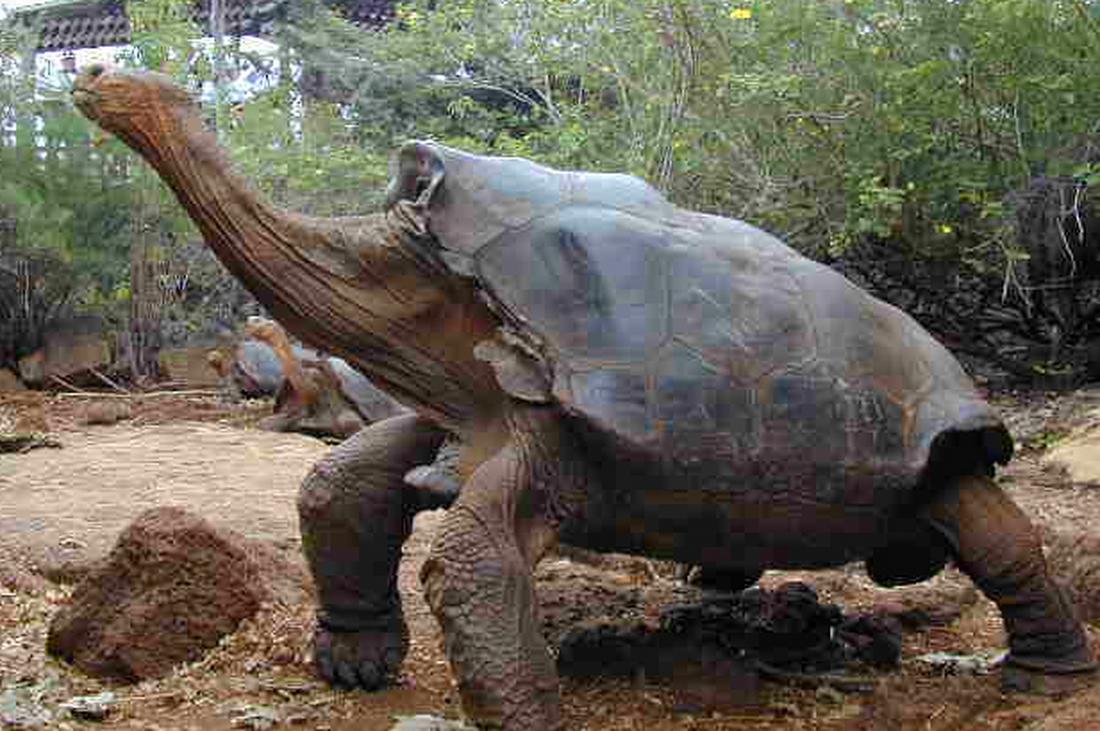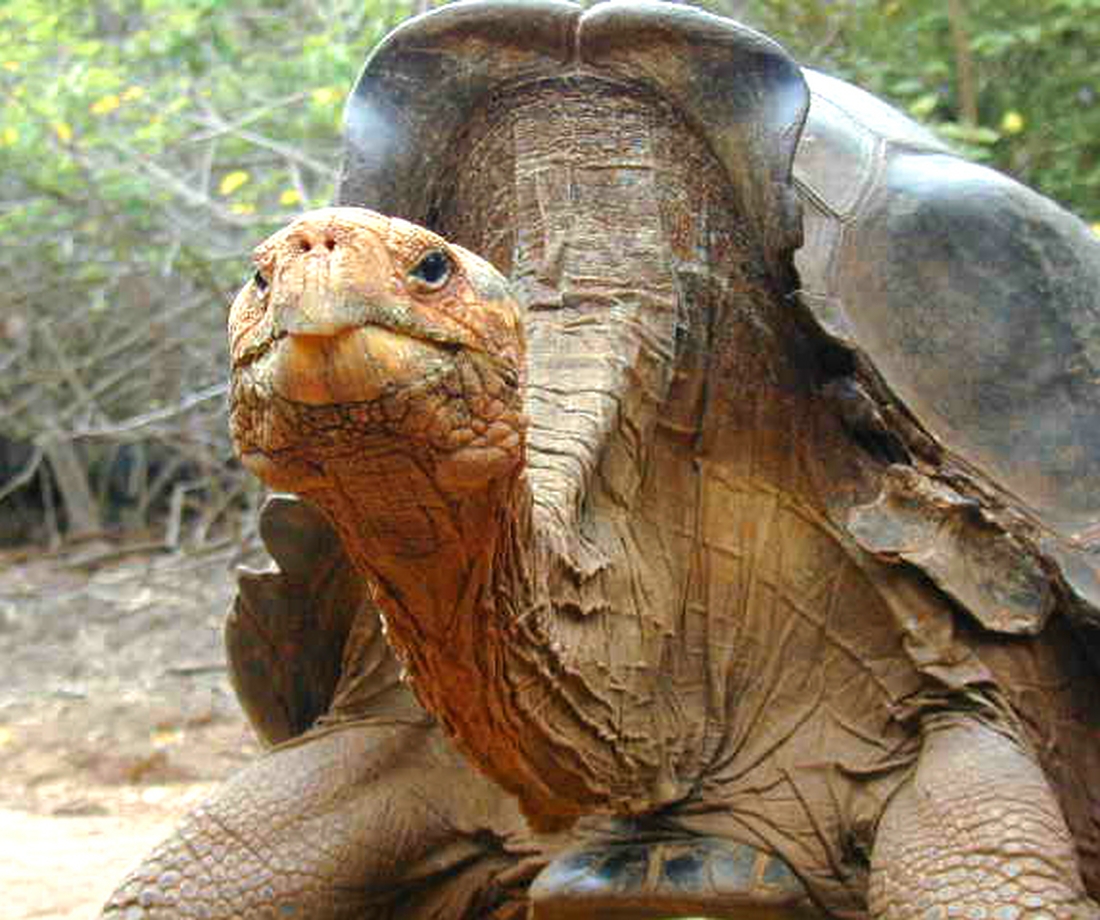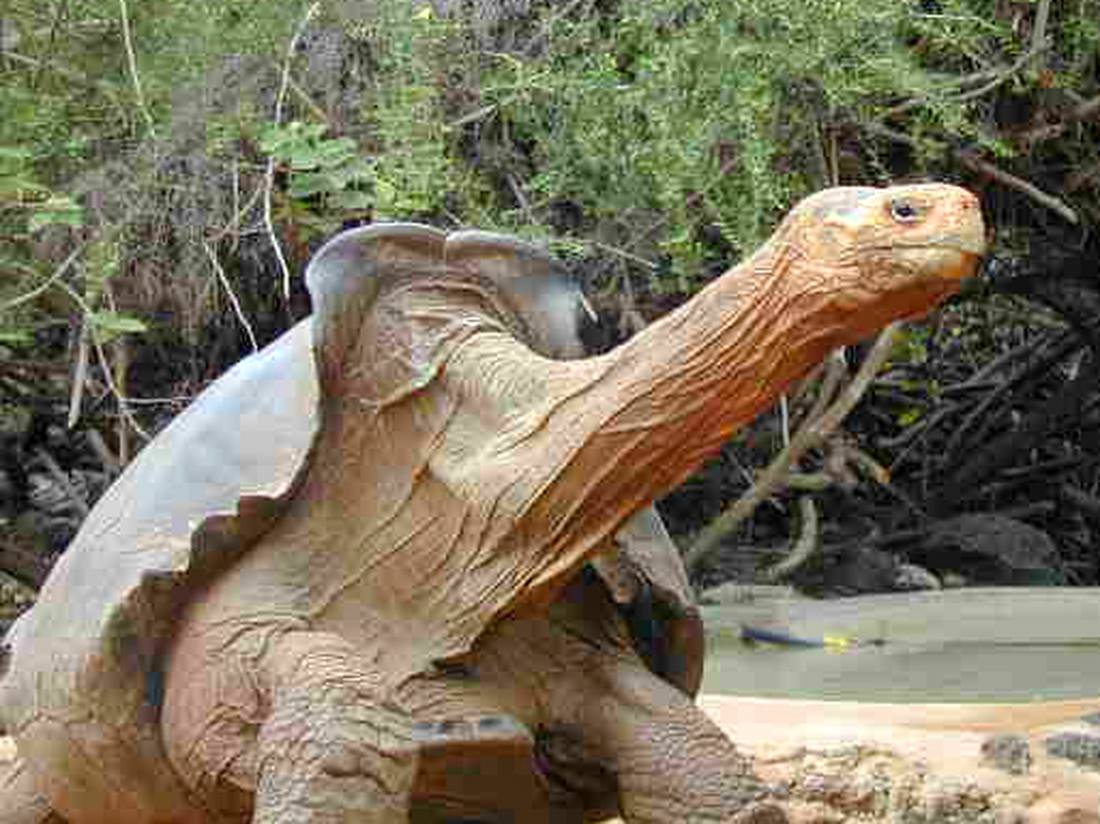Galapagos Species Database
The Galapagos Species Database shares the information about the species from our Natural History Collections.
Chelonoidis hoodensis
Galápago de Española, Tortuga de Española, Española Galapagos Tortoise





Domain
Eukaryota
Kingdom
Animalia
Phylum
Chordata
Class
Reptilia
Order
Testudines
Family
Testunidae
Genus
Chelonoidis
Species
hoodensis
Taxon category: Accepted
Syn.: Geochelone hoodensis (Van Denburgh, 1907), Testudo hoodensis Van Denburgh, 1907, Chelonoidis nigra hoodensis Van Denburgh, 1907, Testudo elephantopus hoodensis Mertens & Wermuth, 1955, Geochelone elephantopus hoodensis Pritchard 1967; Type specimen in CAS. Le et al. (2006) demonstrate that the genus Geochelone is polyphyletic and that the Galapagos Giant Tortoises are better treated as the monophyletic genus Chelonoidis. According to Márquez et al. (2004) and Poulakakis et al. (2008) the Geochelone taxa (= Chelonoidis) from Galapagos are genetically distinct and therefore treated as species and not as subspecies of Geochelone (= Chelonoidis) nigra.
Taxon origin: Endemic
- Jiménez-Uzcátegui, G. Milstead, B., Márquez, C., Zabala, J., Buitrón, P., Llerena, A., et al. (2007) Galapagos vertebrates: endangered status and conservation actions. Galapagos Report 2006–2007. Charles Darwin Foundation, Puerto Ayora, p. 104–110.
- Carrillo, E. Aldás, S., Altamirano, M.A., Ayala-Varela, F., Cisneros-Heredia, D.F., Endara, A., Márquez, C., Morales, M., Nogales-Sornosa, F., Salvador, P., Torres, M.L., Valencia, J., Villamarín-Jurado, F., Yánez-Muñoz, M.H. & Zárate, P. (2005) Lista Roja de los Reptiles del Ecuador. Fundación Novum Milenium, UICN-Sur, UICN-Comité Ecuatoriano, Ministerio de Educación y Cultura, Serie Proyecto PEEPE. Quito, 46 pp.
- IUCN (2010) IUCN Red list of threatened species. Version 2010.1. www.iucnredlist.org
- Pritchard, P.C.H. (1996) The Galapagos tortoises: Nomenclatural and survival status. Chelonian research monographs No. 1. Chelonian Research Foundation.
- Van Denburgh, J. (1914) The gigantic land tortoises of the Galápagos archipelago. Proc. Calif. Acad. Sci. 2, part 1: 203–374, pls. 12-124.
- Poulakakis, N. Glaberman, S., Russello, M., Beheregaray, L.B., Ciofi, C., Powell, J.R. & Caccone, A. (2008) Historical DNA analysis reveals living descendants of an extinct species of Galápagos tortoise. Proc. Natl. Acad. Sci. (PNAS) 105(49): 15464-15469.
- Ernst, C.H. Barbour, R.W. (1989) Turtles of the world. Smithsonian Instit. Press. USA 313 pp.
- Caccone, A. Powell, J. (2009) Giant Tortoises. Mapping their Genetic Past and Future. In: T. De Roy (ed.): Galápagos. Preserving Darwin´s Legacy. Bateman, Albany, New Zealand, p. 98-105.
- Fritts, T.H. (2001) A brief review of the taxonomic history of Galapagos Tortoise relevant to consideration of the most appropiate generic and specifc name for Giant Tortoises in Galapagos. U.S. Geological survey Report, 7 pp.
- Caccone, A. Gibbs, J.P., Ketmaier, V., Suatoni, E. and Powell, J.R. (1999) Origin and Evolutionary Relationships of Giant Galapagos Tortoises. Proc. Natl. Acad. Sci. United States of America (PNAS) 96(23): 13223-13228.
- Márquez, C. Wiedenfeld, D.A., Snell, H.L., Fritts, T., MacFarland, C., Tapia, W., & Naranjo, S. (2004) Population status of Giant Land Tortoises (Geochelone spp., Chelonya: Testudinae) from the Galapagos Islands. Ecología Aplicada 3(1-2): 98-111.
- Van Denburgh, J. (1907) Preliminary descriptions of four new races of gigantic land tortoises from the Galapagos Islands. Expedition of the California Academy of Sciences to the Galápagos Islands, 1905-1906. Proceedings of the California Academy of Sciences 1: 1-6.
- Russello M.A. Poulakakis, N., Gibbs, J.P., Tapia, W., Benavides, E., Powell, J.R. & Caccone, A. (2010) DNA from the Past Informs Ex Situ Conservation for the Future: An ‘Extinct’’ Species of Galápagos Tortoise Identified in Captivity. PLoS ONE 5(1): e8683. doi:10.1371/journal.pone.0008683
- Le, M. Raxworthy, C.J., McCord, W.P. & Mertz, L. (2006) A molecular phylogeny of tortoises (Testudines: Testudinidae) based on mitochondrial and nuclear genes. Molecular Phylogenetics and Evolution 40(2006): 517–531.
- Arteaga, A. Bustamante, L., Vierira, J., Tapia, W., Guayasamin, J.M. (2019) Reptiles of the Galapagos Life on the Enchanted Islands Tropical Herping


